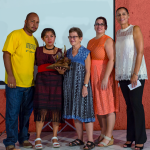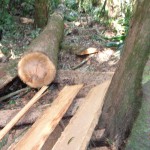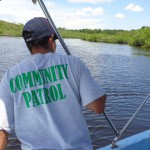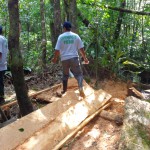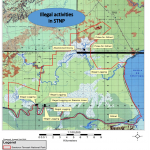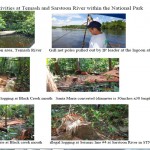An Interesting and Important Article
On Thursday, November 10, 2016, a SATIIM patrol on the Sarstoon River was stopped by the Guatemalan military. See the press release below:
A video of the encounter can be found here:
https://www.youtube.com/watch?v=rNb2gJ8ueWU&feature=youtu.be
The Belize Coalition to Save Our Natural Heritage recognized SATIIM’s ‘tireless efforts in both conservation and human rights’ with a national award in October.
See more information here.
SATIIM and Global Forest Watch Partner to Create the First Maya-led Forest Monitoring Network in Belize and Guatemala
Global Forest Watch, an initiative of the World Resources Institute to establish a global forest monitoring network, has chosen SATIIM as its partner to create a community-led network of forest patrols who will collect and disseminate data about deforestation and environmental damage in the Sarstoon Temash river basin and surrounding areas.
SATIIM will coordinate workshops among Q’eqchi communities in both Belize and Guatemala on how to systematically train and perform patrols, gather data and disseminate information. SATIIM will serve as the region’s primary information portal to GFW’s real-time network for the conservation of large intact forest areas around the world.
This pioneering partnership will first enable the communities in Belize to set a regular schedule of monitoring trips, to compile their data in a systematic manner, contribute to the national and global understanding of the urgent situation in the region, and inform national Forestry Department, which is unable to monitor the area.
SATIIM will also train its partners, two peer community organizations composed of Maya, Garifuna and mestizo communities in Guatemala, in how to use this technology to document forest changes.
This cooperation and data will result in a binational community-based forest monitoring network that will greatly increase forest transparency in an isolated region largely ignored by large environmental groups but targeted for exploitation.
Community Patrols Document Illegal Logging, Fishing and Extraction in Internationally Recognized Wetlands Forest
As the government selectively defends only certain protected areas, Maya communities are organizing their own patrols to monitor their ancestral forests in southern Belize.
In August a SATIIM community forest patrol found evidence of logging along the Sarstoon River, harvesting of comfrey palms, and gill net fishing in the Temash River.
While the government announced efforts to curb illegal activity in the Chiquibul Forest in central Belize, it has ignored the Sarstoon Temash National Park in the district of Toledo in the south.
Almost 20 years ago, the government designated these Mayan ancestral lands a protected area — without community consent. Over the years Maya and Garifuna communities fought a long battle to first co-manage their ancestral lands contained in the park, and then to stop oil drilling in the government’s so-called ‘protected’ area.
In preparation for oil drilling, US Capital (the oil company contracted by the government) dynamited trails through this area recognized by the RAMSAR Convention on Wetlands. The paths were wide enough for jeep traffic. Soon the Maya communities saw evidence of the inevitable increase in poaching and illegal logging.
Since then SATIIM has organized community forest patrols to monitor environmental damage in the park.
The most recent patrol documented 50 seismic trails cut by from the mouth of Sarstoon River to Black Creek alone. Two trails showed recent activity in which Santa Maria trees were harvested and cut into lumber, ready for transport.
As always, the communities take responsibility as environmental stewards of their ancestral lands in the park. They shared their data with the government in the hope that one day it will assume its responsibility to defend — rather than destroy — the park it created.


